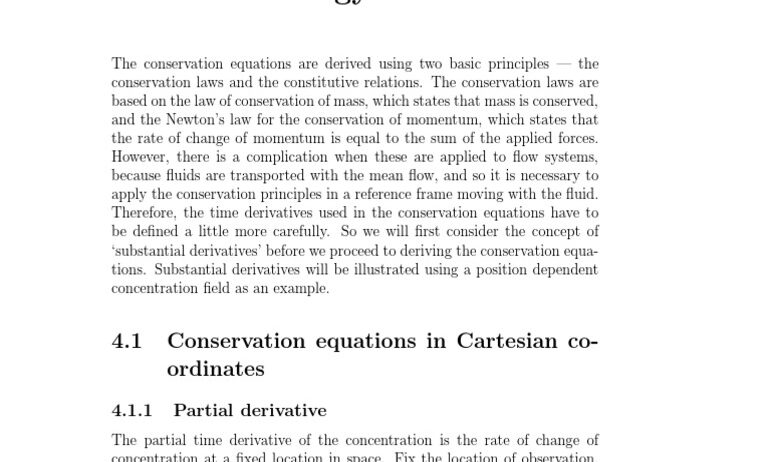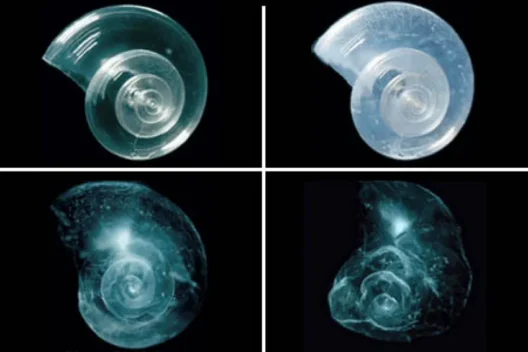Energy and mass are fundamental components of nature, intricately woven into the fabric of ecosystems. Understanding how these two entities interact and are conserved within ecosystems not only enriches our comprehension of ecological dynamics but also unearths critical insights pertinent to the struggles against climate change. By delving into the nuances of energy flow and mass transformations, one can appreciate the delicate equilibrium sustaining life on our planet.
To embark on this journey, we must first explore the principle of conservation. In a closed system, both energy and mass remain constant, though they may transform from one form to another. In ecological contexts, systems are seldom entirely closed; they often exchange energy and matter with their surroundings through various processes. This exchange, however, does not contravene conservation laws; rather, it accentuates their resilience and adaptability.
At the core of an ecosystem lies the sun, an unfathomable energy reservoir. Solar energy is captured by primary producers, primarily plants, through photosynthesis. During this process, light energy transforms into chemical energy, stored in the form of glucose. This initial step primes the ecological energy pyramid, setting the stage for subsequent energy transformations within the ecosystem.
But how does mass come into play? As plants convert sunlight into chemical energy, they also draw carbon dioxide from the atmosphere and water from the soil—thus altering their mass. This transformation is pivotal; as mass is converted into biomass, it establishes a biological foundation for the entire food chain. Whether it’s through herbivores consuming plant matter or carnivores preying on herbivores, mass transformation continues. The consumption of energy-rich biomass epitomizes the transference of energy through trophic levels.
The fascinating aspect of energy flow in ecosystems is its inherent inefficiency. According to the second law of thermodynamics, energy transfer is never 100% efficient. As energy is passed along trophic levels, approximately 90% of it dissipates as heat. Only a small fraction of the initial energy becomes incorporated into new biological mass—this is often referred to as net primary productivity. Despite this inefficiency, the energy retained at each trophic level is fundamental for sustaining life.
Now, let’s turn our attention to the cycle of mass within an ecosystem. Mass does not simply vanish; it undergoes transformation. Decomposition is a critical process that facilitates the recycling of nutrients back into the environment. When organisms die, detritivores and decomposers, such as fungi and bacteria, break down organic matter, returning essential elements like nitrogen, phosphorus, and carbon to the soil. This rejuvenation of the soil serves as the foundation for new plant growth, thereby perpetuating the cycle of life.
Furthermore, water plays a quintessential role in mass conservation. Through processes such as transpiration, precipitation, and evaporation, water continually cycles through the ecosystem, influencing mass distribution and enabling various life forms to thrive. In an era increasingly marked by climate change, understanding this water cycle becomes pivotal. Alterations in precipitation patterns can disrupt the delicate equilibrium of ecosystems, thereby impacting energy flow and mass conservation.
Among the intriguing interactions within ecosystems lies the phenomenon of mutualism, wherein different species cooperate for mutual benefits, facilitating both energy transfer and mass exchange. For example, in coral reefs, a symbiotic relationship exists between corals and zooxanthellae algae. The algae photosynthesize, providing energy to the corals, while in return, they receive nutrients from the corals’ waste. This interdependence exemplifies how energy and mass are conserved and recycled within complex biological networks.
However, beyond understanding these interrelationships, one must also recognize the impact of anthropogenic activities on ecosystem integrity. Deforestation, pollution, and climate change disrupt both energy flow and mass conservation. The removal of forests not only diminishes carbon storage capacity but also alters local water cycles, leading to increased erosion and further degradation of mass within ecosystems. Climate change, with its associated temperature fluctuations and altered precipitation patterns, adds additional stress, compromising the ability of ecosystems to conserve energy and mass effectively.
In contemplating the conservation of energy and mass within ecosystems, it prompts a shift in perspective. Rather than viewing ecosystems as isolated entities, we must recognize their interconnectivity. What happens in one ecosystem can have far-reaching consequences for others. The cascading effects of ecological collapse can ripple beyond borders, affecting global biodiversity and the very climate that sustains life.
As stewards of the Earth, a collective responsibility arises. The challenges we face in conserving energy and mass within ecosystems require not just scientific understanding but also proactive engagement from individuals and communities. Conservation efforts, restoration projects, and sustainable practices must be prioritized to ensure that ecosystems can maintain their functions and services. By preserving the intricate balance of energy flow and mass transformation, we are not merely protecting nature; we are safeguarding our future and promoting resilience against the impending challenges posed by climate change.
In conclusion, comprehending how energy and mass are conserved in ecosystems reveals a mosaic of interrelated processes, fraught with complexity yet grounded in biological principles. This knowledge beckons curiosity, inviting further exploration and understanding. Therein lies the promise of a more sustainable, harmonious relationship with the natural world, one that not only acknowledges the profound interconnectedness of life but also inspires action to secure a stable ecological future.







